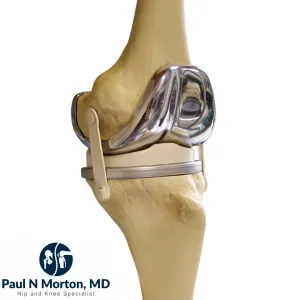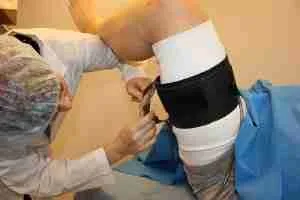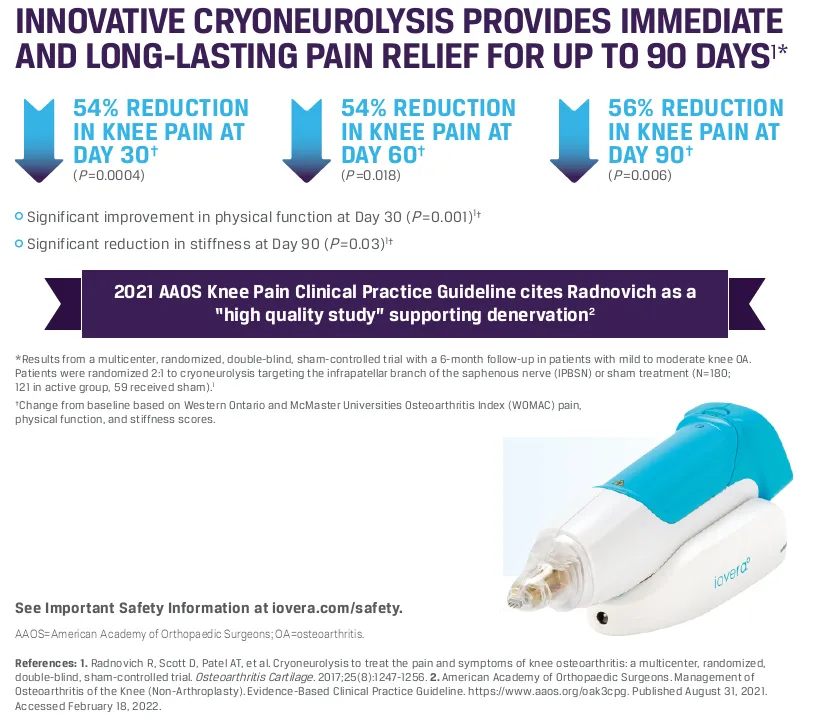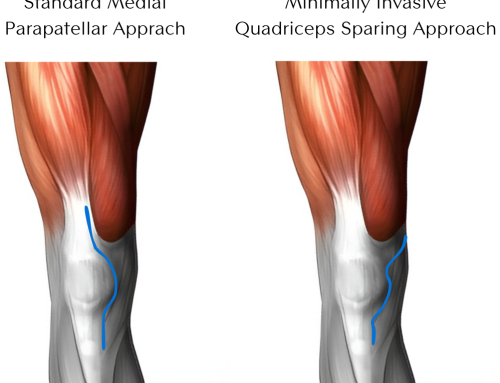Introduction
Knee replacement surgery, or knee arthroplasty, is a procedure that has transformed the lives of millions of patients suffering from severe knee pain and mobility issues. Traditionally, the success of such surgeries has been measured by the relief of pain, the improvement in function, and overall patient satisfaction. With advancements in medical technology, the approach and outcomes of knee replacement have seen substantial improvements. Our clinic incorporates cutting-edge technologies like robotic assistance, spinal analgesia, long-lasting local anesthesia, and innovative procedures like avoiding tourniquets and offering same-day discharges to enhance our success rates.

Understanding Success Rates
The success of a knee replacement is generally defined by the patient’s ability to return to normal activities without pain, alongside improved joint function. Nationally, the success rates of total knee replacements are impressive, with clinical studies reporting over 75-90% of patients experiencing significant pain relief and improved knee function ten years post-operation [1]. However, these outcomes are not just the result of the surgery itself but are also significantly influenced by the surgical techniques and technologies.

Robotic-Assisted Knee Replacement
One of the standout technologies we employ is robotic-assisted knee replacement. This technology allows for greater precision in the placement and alignment of the knee implant. Precision is crucial, as even a slight misalignment can lead to uneven wear and tear, reducing the lifespan of the implant and potentially leading to additional surgeries. Some studies have shown that robotic-assisted knee replacements have improved implant positioning and patient-reported outcomes [2]. By ensuring the implant is optimally positioned, we hope to significantly improve the long-term success of the surgery.

Same-Day Discharge
The possibility of same-day discharges for knee replacement patients is a game-changer in orthopedic surgery. With advancements in surgical techniques and postoperative care, including the technologies mentioned above, patients can safely return home on the same day as their surgery. This practice improves patient comfort and satisfaction [5] and reduces the risk of hospital-acquired infections. Our data shows that patients discharged on the same day report higher satisfaction rates and fewer complications.
Avoiding Tourniquets and Drains
Traditional knee surgeries often use tourniquets to minimize blood loss and drains to remove fluid post-surgery. However, we avoid these where possible. Studies indicate that tourniquet use can lead to muscle damage and pain, potentially delaying recovery [4]. Similarly, avoiding drains can reduce the risk of infection and discomfort, promoting a smoother and faster healing process.

Spinal Analgesia and Long-lasting Local Anesthesia
Managing pain effectively is another critical factor in the success of knee replacements. We utilize spinal analgesia and long-lasting local anesthetics, which have been shown to enhance patient comfort and accelerate recovery times. Spinal analgesia provides effective pain control immediately after surgery, while long-lasting local anesthetics, which can provide pain relief for up to 72 hours, minimize the need for opioid painkillers and reduce the risk of dependency [3]. These approaches improve patient comfort and facilitate earlier mobilization, which is vital for a successful recovery.

Utilizing Iovera
Another innovative approach we adopt is the use of Iovera, a treatment that involves freezing the nerves around the knee to provide pain relief before and after surgery. This FDA-approved technology has been proven to reduce the need for opioids post-surgery and to facilitate a quicker return to daily activities [6]. By implementing Iovera, we ensure our patients experience less pain and a more manageable recovery phase.

Spinal Analgesia and Long-lasting Local Anesthesia
Managing pain effectively is another critical factor in the success of knee replacements. We utilize spinal analgesia and long-lasting local anesthetics, which have been shown to enhance patient comfort and accelerate recovery times. Spinal analgesia provides effective pain control immediately after surgery, while long-lasting local anesthetics, which can provide pain relief for up to 72 hours, minimize the need for opioid painkillers and reduce the risk of dependency [3]. These approaches improve patient comfort and facilitate earlier mobilization, which is vital for a successful recovery.

The Role of Nutritional Supplementation with Protein and Amino Acids in Recovery from Knee Replacement Surgery
Nutritional supplementation, particularly with proteins and amino acids, can enhance recovery after knee replacement surgery. A specialized blend, such as Ortho Nutrition Bundle, can provide targeted support to meet the increased nutritional demands during the healing and rehabilitation phases.
Importance of Protein and Amino Acids
- Protein Needs: After surgery, the body requires more protein than usual to repair tissue, support immune function, and facilitate the healing process. Adequate protein intake helps regenerate muscle tissue and other structural components of the knee joint.
- Amino Acids: Specific amino acids, such as arginine and glutamine, are known for their roles in wound healing and immune function. Supplementation can enhance these processes, particularly in patients who might not be able to meet their needs through diet alone.
Benefits of a Specialized Blend like Ortho Nutrition Bundle
- Tailored Nutrition: this bundle typically contains a blend of different proteins and essential amino acids optimized for surgical recovery. This includes both branched-chain amino acids (BCAAs) that help in muscle recovery and other amino acids that support overall healing.
- Enhanced Absorption: These supplements are often designed for easy digestion and rapid absorption, ensuring that the nutrients are readily available to the body when needed most.
- Convenience: For patients recovering from surgery, maintaining an optimal diet can be challenging. Supplements in the form of shakes or powders can provide a convenient way to consume high-quality nutrients.
Clinical Evidence
- Support for Muscle Mass: Research has shown that protein and amino acid supplementation can help maintain muscle mass during periods of reduced mobility, which is common after knee surgery.
- Improved Recovery Rates: Studies have indicated that patients who receive amino acid supplementation report faster overall recovery times and improved outcomes in terms of pain and mobility.

Conclusion
The success of knee replacement surgery is significantly enhanced by technological advancements and innovative surgical techniques. At our clinic, we are proud to offer robotic-assisted surgeries, advanced pain management options, and procedures that reduce recovery time and improve patient outcomes. We encourage potential patients to consult with our specialists to understand how these advancements can benefit them specifically and to discuss any concerns they may have about the procedure.
References
- Rodriguez-Merchan EC. Patient Satisfaction Following Primary Total Knee Arthroplasty: Contributing Factors. Arch Bone Jt Surg. 2021 Jul;9(4):379-386. doi: 10.22038/abjs.2020.46395.2274. PMID: 34423084; PMCID: PMC8359659.
- Zhang, Junren, et al. “Robotic‐arm assisted total knee arthroplasty is associated with improved accuracy and patient reported outcomes: a systematic review and meta‐analysis.” Knee Surgery, Sports Traumatology, Arthroscopy 30.8 (2022): 2677-2695.
- Malige, Ajith, et al. “Liposomal bupivacaine in adductor canal blocks before total knee arthroplasty leads to improved postoperative outcomes: a randomized controlled trial.” The Journal of arthroplasty 37.8 (2022): 1549-1556.
- Zhao, Hai-Yan, et al. “The effect of tourniquet uses on total blood loss, early function, and pain after primary total knee arthroplasty: a prospective, randomized controlled trial.” Bone & joint research 9.6 (2020): 322-332.
- Jansson, Miia Marika, et al. “Patients’ satisfaction and experiences during elective primary fast‐track total hip and knee arthroplasty journey: A qualitative study.” Journal of Clinical Nursing 29.3-4 (2020): 567-582.
- Roth, Zachary A., et al. “Preoperative cryoneurolysis for total knee arthroplasty: a case series.” Journal of PeriAnesthesia Nursing 38.1 (2023): 33-38.




